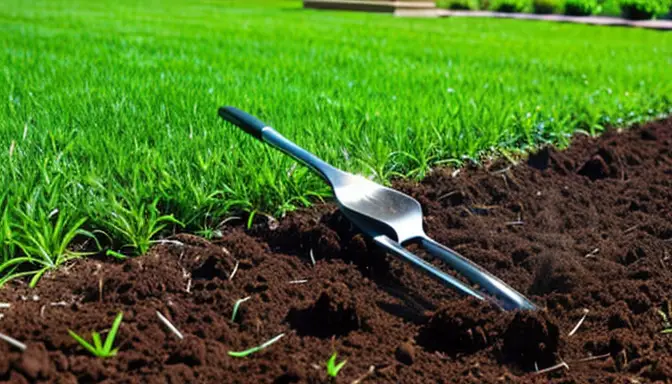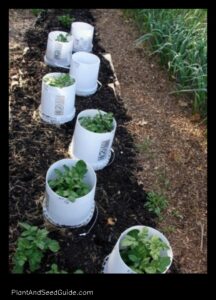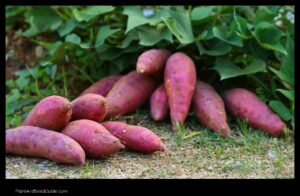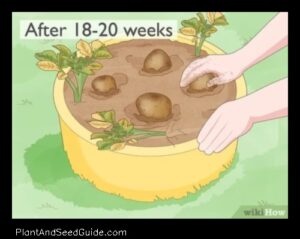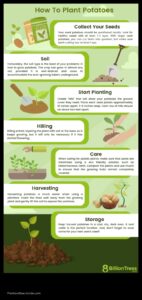Planting grass seed after treating for grubs is a crucial step in restoring the health and beauty of your lawn. Once you have effectively dealt with the grub infestation, it’s time to focus on rejuvenating your grass and promoting new growth. By following a systematic approach, you can ensure that your lawn thrives and remains resilient against future threats.
First and foremost, assess the condition of your soil post-treatment. Clear any debris and ensure proper aeration to create an optimal environment for the grass seed to germinate. Adding organic matter can further enhance soil quality, providing essential nutrients for healthy growth.
When selecting the grass seed, consider factors such as your lawn type, climate, and sunlight exposure. Different grass species have varying maintenance requirements, so choose a seed that aligns with your preferences and environmental conditions.
For successful planting, follow recommended seeding techniques. Whether you opt for broadcasting or spot seeding, ensure even coverage to promote uniform germination. Establish a consistent watering schedule to keep the soil moist but not waterlogged.
Post-planting care is equally important. Regular watering, mowing at the correct height, and fertilizing as needed are essential for nurturing young grass and establishing a lush lawn. Keep an eye out for any signs of pests or diseases, addressing them promptly to maintain the health of your lawn.
Understanding Grubs and Their Impact on Lawns
Grubs, those underground troublemakers, can wreak havoc on your once lush lawn without you even realizing it. These sneaky pests feast on grass roots, causing unsightly brown patches and hindering healthy growth. Understanding their life cycle and habits is like uncovering a secret plot against your lawn’s well-being. It’s like being a detective, but instead of solving crimes, you’re saving your grass from destruction.
Imagine your lawn as a bustling city, with grubs as the hidden villains plotting to undermine its prosperity. Signs of their presence include yellowing or wilting grass, turf that feels strangely spongy underfoot, or the telltale marks of birds and skunks digging for their grubby feast. Detecting these signs early is like catching the bad guys before they can do real damage.
When it comes to dealing with these lawn pests, you have an arsenal of options at your disposal.
It’s like preparing for battle, choosing your weapons wisely based on the size of the enemy forces and the lay of the land.From deploying insecticides to enlisting the help of nematodes or natural predators, there are strategies to combat the grub invasion..
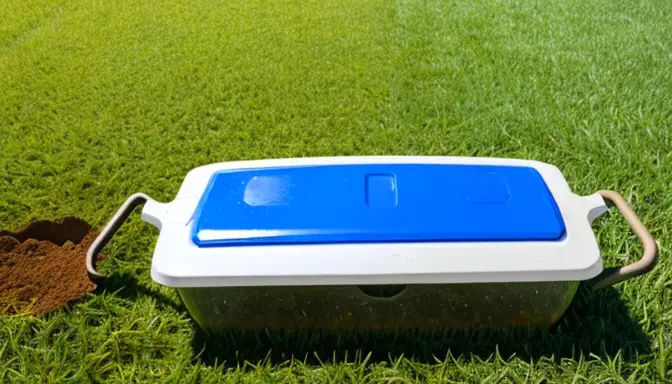
Identifying Signs of Grub Infestation
Grub infestations can wreak havoc on your lawn, causing distressing damage that can be challenging to spot. Understanding the signs of a grub infestation is crucial for timely intervention and effective control. Here are some key indicators to watch out for:
- Yellowing or Wilting Grass: If you notice patches of grass turning yellow or wilting despite adequate watering, it could be a sign of grub damage to the roots.
- Spongy Turf: Walking on your lawn and feeling a spongy texture underfoot can indicate that grubs have been feeding on the roots, causing the turf to lose its firmness.
- Pest Activity: Keep an eye out for birds, skunks, or other animals digging in your lawn. These creatures are attracted to grubs as a food source and their presence can signal a grub infestation.
By recognizing these signs early on, you can take proactive measures to address the grub infestation and prevent further damage to your lawn.
Treating Lawns for Grubs
When it comes to treating lawns for grubs, it’s essential to choose the right method based on the severity of the infestation and environmental factors. Here are some effective ways to control grub populations:
- Applying Insecticides: Chemical insecticides can be used to target and eliminate grubs in the lawn. It’s important to follow the instructions carefully and consider the potential impact on beneficial insects.
- Using Nematodes: Beneficial nematodes are natural predators of grubs and can be applied to the soil to control their population. These microscopic organisms are safe for plants and pets.
- Employing Natural Predators: Encouraging natural predators like birds, toads, or predatory insects in the garden can help keep grub numbers in check. Creating a diverse ecosystem can support natural pest control.
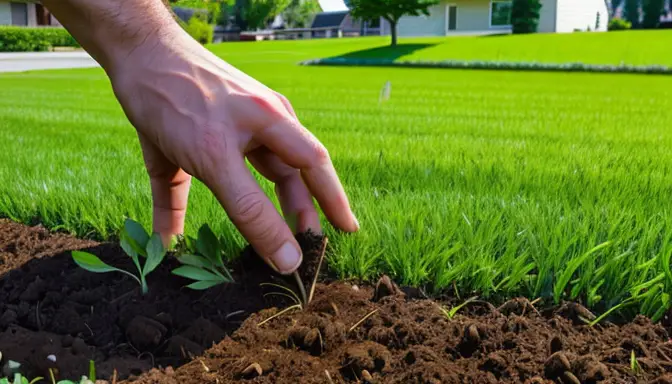
Preparing the Soil for Grass Seed
When preparing the soil for planting grass seed, it is crucial to create an optimal environment that promotes germination and healthy growth. Start by clearing the area of any debris or rocks that may hinder seed establishment. Aerate the soil to improve drainage and allow roots to penetrate easily. Adding organic matter, such as compost or peat moss, enriches the soil with essential nutrients and improves its texture.
Consider conducting a soil test to determine its pH level and nutrient content. This information helps in selecting the right amendments to balance the soil and provide an ideal growing medium for the grass seed. Mixing in fertilizer or lime based on the test results can further enhance soil quality and support vigorous plant development.
Selecting the Right Grass Seed
When it comes to selecting the right grass seed for your lawn, there are several key factors to consider to ensure a healthy and vibrant yard. Let’s dive into the essential aspects that should guide your decision:
- Lawn Type: Different grass species are suitable for various types of lawns, such as sunny, shaded, or high-traffic areas. Understanding your lawn’s specific needs will help you choose the most appropriate grass seed.
- Climate Conditions: Consider the climate in your region, including temperature and rainfall patterns, to select grass seed that thrives in your area’s conditions. Certain grass types are better suited for hot and dry climates, while others prefer cooler temperatures.
- Sunlight Exposure: Assess the amount of sunlight your lawn receives throughout the day. Some grass species require full sun, while others can tolerate shade. Choosing grass seed that matches your lawn’s sunlight exposure is crucial for successful growth.
- Grass Species: Each grass species has unique characteristics in terms of appearance, growth rate, and maintenance requirements. Consider factors like color, texture, and water needs when selecting the right grass seed for your lawn.
- Seed Quality: Opt for high-quality grass seed from reputable sources to ensure better germination rates and overall lawn health. Investing in premium seed varieties can lead to a lush and resilient lawn.
- Maintenance Requirements: Evaluate the maintenance demands of different grass types, including watering frequency, mowing height, and fertilizer needs. Choose grass seed that aligns with your desired level of lawn care commitment.
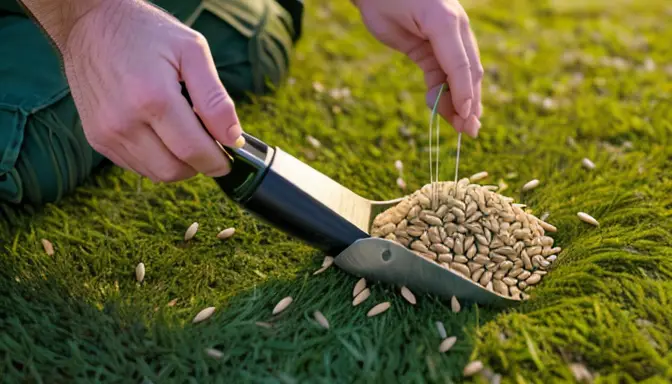
Planting Grass Seed
When it comes to planting grass seed, attention to detail is key to achieving a lush and healthy lawn. Before you start sowing, ensure that the soil is well-prepared and suitable for seed germination. Clear any debris, rocks, or weeds that may hinder growth, creating a clean canvas for your new grass to thrive. Aerating the soil can also improve air circulation and water absorption, setting the stage for successful planting.
Consider the type of grass seed you are using and follow the recommended seeding rate for even coverage. Whether you opt for cool-season or warm-season grasses, make sure to spread the seeds evenly using a broadcast spreader or by hand for smaller areas. Lightly rake the seeds into the soil at the recommended depth to promote good seed-to-soil contact and germination.
After seeding, water the area gently to avoid washing away the seeds and keep the soil consistently moist until germination occurs.
Patience is key during this phase, as germination times can vary based on environmental conditions.Depending on the grass species, you may need to water multiple times a day to ensure the seeds stay hydrated..
Maintaining a Healthy Lawn Post-Grub Treatment
After successfully treating your lawn for grubs, it’s crucial to maintain its health to ensure long-term vibrancy and resilience. Regular care and monitoring are key to preventing future infestations and promoting strong grass growth. Here are some essential tips for maintaining a healthy lawn post-grub treatment:
- Regular Watering: Ensure your lawn receives adequate water to support grass growth and recovery from the treatment.
- Proper Mowing: Keep your grass at the recommended height to encourage healthy growth and discourage pests.
- Fertilizing: Use a suitable fertilizer to provide essential nutrients for the grass to thrive.
- Monitoring for Pests and Diseases: Regularly inspect your lawn for any signs of pests or diseases and take prompt action if needed.
By following these maintenance practices diligently, you can enjoy a lush, green lawn that remains resilient against potential threats, ensuring the beauty and health of your outdoor space for years to come.
Frequently Asked Questions
- Can I plant grass seed immediately after treating for grubs?
It is recommended to wait for a certain period after treating for grubs before planting grass seed. This allows the soil to recover from the treatment and ensures the new grass seed will germinate effectively.
- How can I prevent future grub infestations in my lawn?
Maintaining proper lawn care practices such as regular watering, mowing at the correct height, and aerating the soil can help prevent future grub infestations. Additionally, using preventive grub control measures can be beneficial.
- What should I do if I notice signs of grub infestation in my lawn?
If you observe signs of grub infestation such as brown patches, wilting grass, or presence of pests like birds or skunks, it is advisable to take prompt action. Contacting a professional for proper identification and treatment is recommended.
- Wild Rose Country: Exploring Untamed Beauty - July 15, 2024
- Wildflower Nursery Decor: Bringing Nature Indoors - July 15, 2024
- Young Sprout of Grass: Nurturing New Life - July 15, 2024
